Moisture measurement
The term “moisture” in the transformer industry is commonly used to indicate water which is absorbed in the paper or dissolved in the oil. Occasionally, the terms “water” or “water content” are used as an alternative way to describe the same substance.

Water in transformers can be found in different parts of the insulation system. It can accumulate in solid insulation, be dissolved in oil, or be found in the form of liquid water at the core or bottom of a transformer.
If it has been determined that a transformer has an excessive moisture content, either through water-in-oil analysis or dew-point analysis, the transformer should be dried out. Otherwise, the presence of moisture in the kraft paper will definitely shorten the life due to chemical decomposition through oxidation of the cellulose.
Simple hot oil flush
A simple hot oil flush is one method, although it is fairly slow. Oil is pumped through a filter press, which contains paper filter elements, and then heated and sprayed onto the core and coils. The hot oil has a greater affinity for moisture than cold oil and will pick up some moisture from the core and coil insulation.
Running the oil through a filter press allows the filter elements to remove some of the moisture in the oil. Cooling the oil before it goes through the filter press will enhance the removal of moisture from the oil.
To spray hot oil
A better method is to spray hot oil into the transformer under vacuum. The combination of the heat from the hot oil and the vacuum will cause the moisture in the insulation to ‘‘flash off’’ and dry the transformer. A cold trap can enhance the action of a mechanical vacuum pump. Once the mechanical pump removes all the air from the transformer tank, the only gas left in this space is H2O.
A cold trap using a dry ice and acetone jacket will instantly freeze any water vapor with the low-temperature ice having a very low vapor pressure.
The cold trap thus acts like an auxiliary vacuum pump. The ice provides a direct measurement of the amount of moisture removed from the cellulose.
Online Power Transformer Moisture Removal System (VIDEO)
Moisture in transformers (VIDEO)
The research conducted at Monash University has shown that, for the accurate moisture assessment of transformer insulation, the continuous monitoring of a number of parameters, including transformer load, temperature and oil relative saturation, is required. The measurement of water solubility characteristic of oil in the transformer is also required.
How is it possible to identify a transformer with moisture concerns for further monitoring? There is a demand for a classification procedure, which would rank transformers by moisture levels.
References //
- Power Transformers Principles and Applications – John J. Winders, Jr. (Amazon)
- Moisture assessment in power transformers – V. G. Davydov, O. Roizman
Copyright Notice
This technical article is protected by U.S. and international copyright laws. Reproduction and distribution of PDF version of this technical article to websites such as Linkedin, Scribd, Facebook and others without written permission of the sponsor is illegal and strictly prohibited.© EEP-Electrical Engineering Portal.
Related electrical guides & articles
Premium Membership
Edvard Csanyi
Hi, I'm an electrical engineer, programmer and founder of EEP - Electrical Engineering Portal. I worked twelve years at Schneider Electric in the position of technical support for low- and medium-voltage projects and the design of busbar trunking systems.I'm highly specialized in the design of LV/MV switchgear and low-voltage, high-power busbar trunking (<6300A) in substations, commercial buildings and industry facilities. I'm also a professional in AutoCAD programming.
Profile: Edvard Csanyi

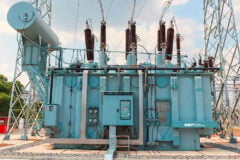
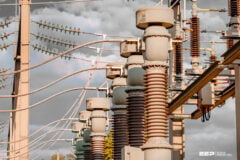
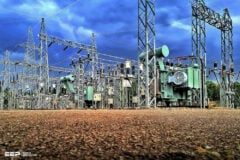
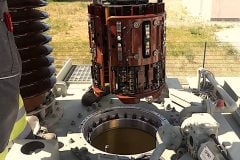

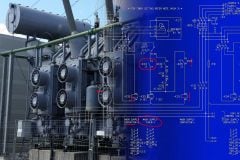




When using Mobile processing vehicle with 1″ filter hose, I am losing BTU’s from Truck to unit, Very hard to achieve 150F to reduce moisture, any suggestions?
i want to know about how to dry transformer without oil filling in it & is there any option for dry air which can help. and what is the best dew point of transformer nad how to increase it by dry air. please reply me on this or on my mail id smit.suthar@gmail.com
Hi Sumit,
It is possible to dry the transformers without oil. Our solution exactly does that – the coils are heated with our very safe, reliable low-frequency heating-based smart drying system. The oil is completely drained out from the transformer and heating is done under vacuum to remove moisture from paper/ solid insulation. This is superior and gives a much better drying quality.
How much is the heating current that you apply to the transformer coils?
I am in a process of finding a relation between temperature VS time Vs megger for a new manufactured core coil which is sent into oven for drying process.
How long each KVA should be placed in the oven for drying complete moisture.
Reply will be appreciated.
We have recently dried a moisture laden trans former and the vacuum method was employed which saved us nearly 70% of the amount which we would have if the core is taken to oven
Online Power Transformer Moisture Removal System, How effective is?
Thanks
Very valuable for each & every electrical engineers
To remove moisture content of the transformer best method is to use hot oil spray into the transformer. The combination of heat from hot oil & vacuum will remove the moisture content from the insulation & dry the transformer.
Dear Mr.Edvard Csanyi,
It is nice that you are educating Electrical Engineers world- over through this portal, particularly more of Transformers. The Transformer is such an equipment that all the three wings of Power System utilize it.It is an important equipment for Generation, Transmission & Distribution.You must be congratulated on this accord.
with regards.
Er.K.K.Murty.
Retd. Chief Engineer(Testing& Commun.), MPPTCL,Jabalpur(INDIA)
Thank you for the interesting article.
Please share your thoughts of “soaking a new transformer”.
Is it necessary and for how long.
Hi,
would you send some articles, about a noise transformer and how to care about this problem?
Regards